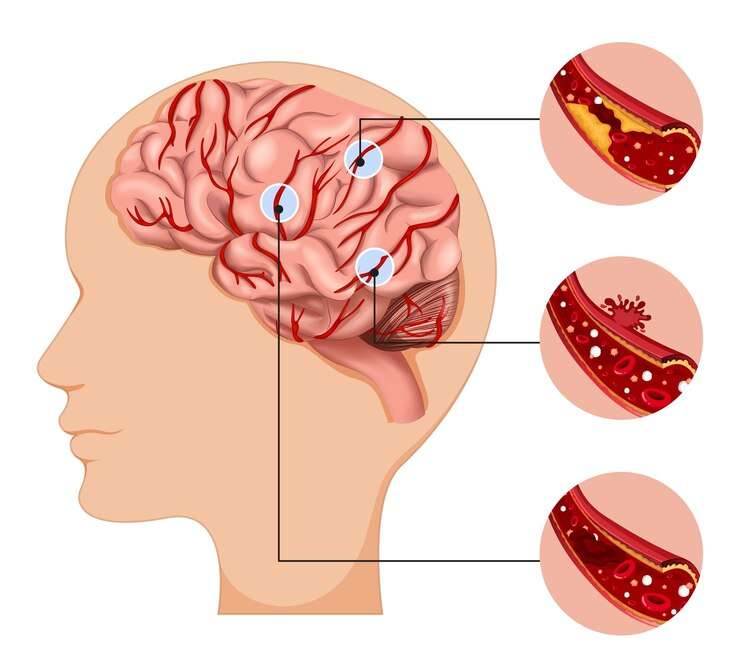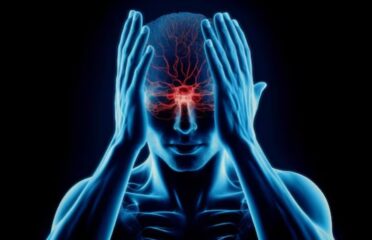Olivopontocerebellar Atrophy
Overview

Olivopontocerebellar atrophy (OPCA) signifies the progressive degeneration of neurons within specific brain regions, namely the cerebellum, pons, and inferior olivary nucleus. This condition manifests in various neurodegenerative syndromes, encompassing both inherited and non-inherited forms of ataxia. Notably, OPCA is implicated in hereditary spinocerebellar ataxias, such as Machado–Joseph disease, and in multiple system atrophy (MSA), where it is a primary association. The impact on these crucial brain areas contributes to motor control and coordination issues, characteristic of ataxic disorders. Understanding OPCA's role in diverse syndromes is pivotal for targeted interventions and advancing our grasp of these intricate neurological conditions.
Symptoms
Olivopontocerebellar atrophy (OPCA) manifests with progressive cerebellar ataxia, resulting in clumsiness, veering while walking, a wide-based stance, and unexplained falls without signs of paralysis.
- Varied clinical presentations often impact speech, balance, and walking, making individual symptoms diverse.
- Associated neurological issues may include spasmodic dysphonia, hypertonia, hyperreflexia, rigidity, dysarthria, dysphagia, and neck dystonic posture.
- The condition primarily affects motor functions, and patients commonly experience challenges in coordinating movements.
- OPCA's impact on the cerebellum, pons, and inferior olivary nucleus underscores its broad influence on motor control and coordination.
- Recognition of these diverse symptoms is crucial for accurate diagnosis and developing targeted interventions for individuals affected by OPCA.
Causes & Risks
OPCA Risks:
Genetic & Environmental Factors
Genetic Links:
1. Certain OPCA forms result from hereditary genetic mutations, impacting cell function and driving neurodegeneration.
2. Sporadic Causes:
In sporadic cases, undefined factors like environmental toxins contribute to brain structure degeneration.
3. Protein Accumulation:
Abnormal proteins, such as tau or alpha-synuclein, accumulate in brain cells, influencing degeneration.
4. Age Onset & Gender Variation:
Typically appears between 40 to 60 years, with variable onset. Some OPCA subtypes slightly favor males, but this varies.
5. Family Impact:
Familial OPCA history heightens risk due to shared genetic factors.
6. Genetic Mutations & Environmental Exposure:
Specific mutations increase OPCA risk for affected individuals or offspring, while uncertain toxins may contribute to sporadic OPCA risk.
Test & Diagnosis
The focus of physiotherapy is to improve the balance and walking abilities of patients with OPCA, which can help stimulate neuroplastic changes in the neural structures that have atrophied. A 12-week challenge-oriented program that involves repetitive training with task challenges and motor skill acquisition is supervised by a physiotherapist. The patient's mastery of challenges guides the progression of tasks throughout the program. Safety measures are in place to reduce the risk of falls, including overground harness systems, home exercises, and aquatic programs to enhance balance learning. Monitoring is continuously carried out to make necessary adjustments to the treatment plan based on patient progress. Assessment tools such as the Berg Balance Scale, Dynamic Gait Index, and activities-specific balance confidence scales are used to evaluate progress over time.
Treatment
The focus of physiotherapy is to improve the balance and walking abilities of patients with OPCA, which can help stimulate neuroplastic changes in the neural structures that have atrophied.
A 12-week challenge-oriented program that involves repetitive training with task challenges and motor skill acquisition is supervised by a physiotherapist. The patient's mastery of challenges guides the progression of tasks throughout the program.
Safety measures are in place to reduce the risk of falls, including overground harness systems, home exercises, and aquatic programs to enhance balance learning. Monitoring is continuously carried out to make necessary adjustments to the treatment plan based on patient progress.
Assessment tools such as the Berg Balance Scale, Dynamic Gait Index, and activities-specific balance confidence scales are used to evaluate progress over time.
Living With
Ongoing challenges persist with Olivopontocerebellar atrophy (OPCA) as it progressively impacts motor functions and coordination. Individuals managing OPCA encounter motor difficulties marked by muscle stiffness, tremors, an unsteady gait, and balance issues. The escalating impact of OPCA makes routine tasks like walking, dressing, and eating increasingly challenging. Communication hurdles arise with speech and swallowing difficulties, affecting verbal interaction and nutrition.
Vision problems, such as nystagmus or difficulty controlling eye movements, may manifest. While primarily affecting motor functions, some individuals may experience mild cognitive changes, impacting attention and executive function. The progressive nature often heightens dependency on caregivers for daily activities and mobility assistance.
Complications
OPCA, a progressive disorder, can cause motor dysfunction that can lead to difficulties in movement, coordination, and muscle control. This can result in stiffness, tremors, and mobility issues, along with gait disturbances, which make it challenging to walk or maintain balance. These symptoms can significantly affect an individual's quality of life and require ongoing management and support to help them cope with the condition.





